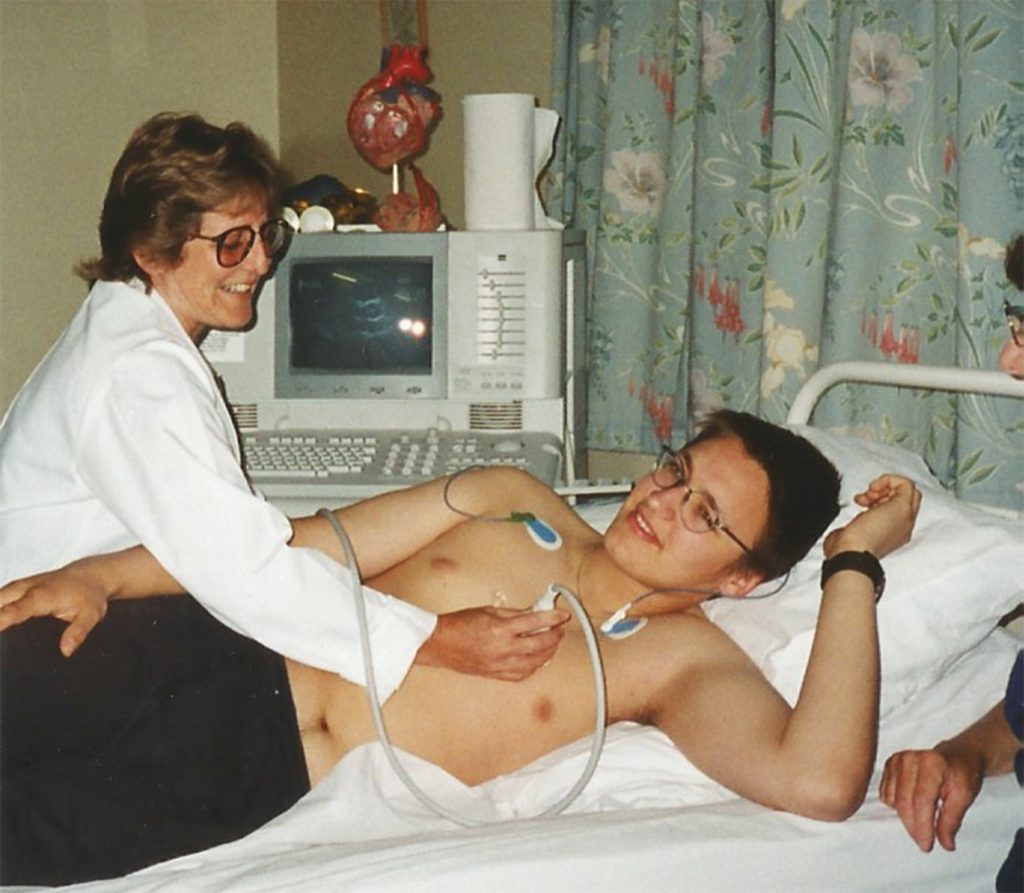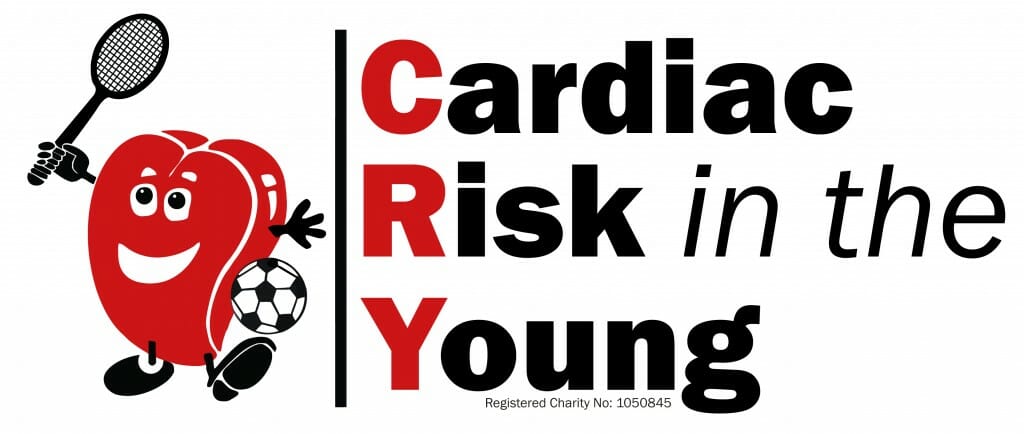CRY Founder Alison Cox MBE first had the idea to offer cardiac screening to young people in 1993. Alison discussed this with Professor William McKenna, and with the help of the Lawn Tennis Association, CRY held its first ever screening event in 1993. This was for elite tennis players at the Lawn tennis Association National Tournament, and players such as Tim Henman, Jamie Delgado, Jo Durie, and Jeremy Bates had their hearts tested. Professor McKenna completed the screenings and Jeremy, who was ranked No. 1 in the UK at the time and became CRY’s first Patron, did a great job of helping us maximise awareness. He was filmed being screened, and the event was featured on BBC Breakfast.
That weekend we screened 60 people. In the next few years, our screening programme gradually started taking off, and the number of young people we were able to screen soon increased.
CRY’s first fundraising event (which we looked at in a recent blog post here) helped us raise £10,000 for an echocardiogram machine in 1995. This was an instrumental piece of equipment as we looked to establish our screening programme. Along with the invaluable help of volunteers and those who started working for CRY, we continued to make progress. Just a year later by 1996, CRY had already screened a total of 2,000 young people.
1997 was a huge year for CRY’s screening programme. For a start, we had our first public screening event, which was held in Tenby. Maureen Ward, who had served as the Mayor of Tenby, helped support the screening in memory of her son, Caradoc James, who died suddenly in 1995. Sanjay Sharma, who was a doctor at the time and joined CRY in 1996 as the charity’s first cardiologist, was part of the screening team and completed tests on the day.
Later in 1997 in June, CRY received its first ECG machine as a donation from Marquette Hellige, which John Waudby, who was the chief echocardiographer at Bradford General Infirmary, helped organise. John had a connection to the charity’s work as he was friends with CRY’s North West Representative Barry O’Loughlin, whose 11-year-old son, Dominic, died suddenly due to cardiomyopathy. Receiving our first ECG machine enabled us to further the testing we started with our echo machine.

Shortly after on June 6th and 7th, we held the first cardiac screening at a school at Worksop College. We were able to screen 52 students over the two days, which was a record for us at a screening event at the time.
As CRY didn’t have the mobile screening units to travel all over the country like we do now, we worked to set up ECG’s in different communities around the country. For instance, another step forward in the summer of 1997 came with Lothian County Council in Edinburgh, who purchased an ECG machine to introduce cardiac screening in their schools. And on August 28th, we held our biggest event yet with our first ‘mass’ screening. CRY’s screening team travelled to Yorkshire to test young people taking part in the annual six-a-side Dominic O’Loughlin Memorial Football Tournament. By the end of what was a long, busy day, we completed 283 ECG’s and 93 echo’s.
In 1998, we launched the CRY sports cardiology unit at St George’s Hospital. This featured an office in the medical school there and employed a full-time administrator and cardiac nurse. Having a base to oversee our growing national screening programme, and answer all medical enquiries, was a major advancement for the charity.
By 1999, we had amassed 16 ECG machines, received a mobile screening van that we could use to take our screenings around the UK (which was first used in October 1999), and added Jan Smith to the CRY team to serve as the administrator for our screening programme.
As funding, screening equipment, and awareness of CRY increased, our screening programme continued to expand. Tony Hill and Steve Cox, who took over managing CRY’s screening programme and is now CRY’s Chief Executive, helped oversee these events as we progressed into the early 2000s.
One of CRY’s most significant events from this time was when we held the first ethically approved state school screening in 2002. We travelled all the way to the Western Isles off the coast of Scotland, with volunteer administrator George Moody helping immensely by organising materials and a venue for the event: a community suite at The Nicholson Institute in Stornoway. Steve attended with Sanjay to oversee the screening funded in memory of Joanne Fotheringham, and Jane Adams, the Director of Nursing at the Western Isles Hospital, provided a team of three ECG nurses to help take readings on the day. We continued to hold regular screenings in Ullapool in memory of Joanne from 2002.

Another early, milestone date for CRY was the opening of a heart screening clinic at Colchester General Hospital on May 29th, 2004. The clinic was the first of its kind, and was introduced to be held every two months to screen young people and detect previously unknown heart conditions. The first clinics offered ECG screenings for the significantly subsidised cost of £35 per person. Caroline Gard, who suddenly lost her 17-year-old son Andy due to SADS in 1997, was the driving force behind the introduction of the clinic.
Continued campaigning efforts to support CRY also led to a crucial ruling in North Essex which granted approval for specialist cardiac screening (provided by CRY) to be completed at schools in the area. This started our work to pursue the same approval in other areas to increase screening opportunities around the country.
These were all major developments for CRY as we gradually started expanding our screening programme around the country, which has gone from strength to strength every year since (we will cover the later years in more detail in future blog posts!).
Our screening programme has grown exponentially in the last 25 years. We have gone from screening fewer than 3,000 people a year just 10 years ago to over 30,000, with a fleet of vans taking our team to screen young people around the country. The programme never would have gotten underway without the efforts of Alison and all of our volunteers, employees, and supporters who offered their dedication, funds, and expertise to CRY in the early years.
In new blog posts that will publish in the coming weeks, we’ll look back at screening events beginning at St George’s Hospital, the introduction of the CRY Centre for Cardiac Pathology, how our screening team expanded, and how we have continued to test the hearts of more young people every year.
